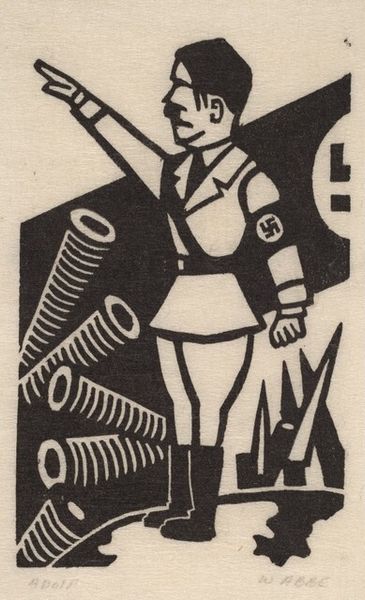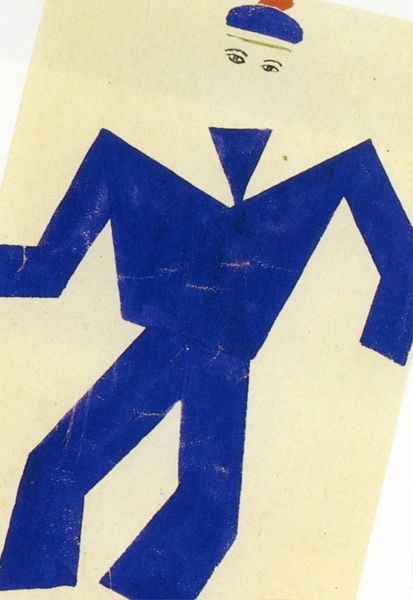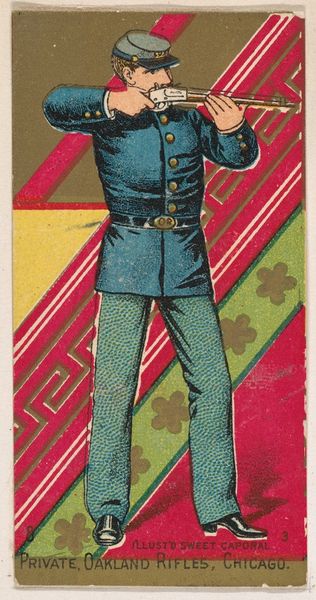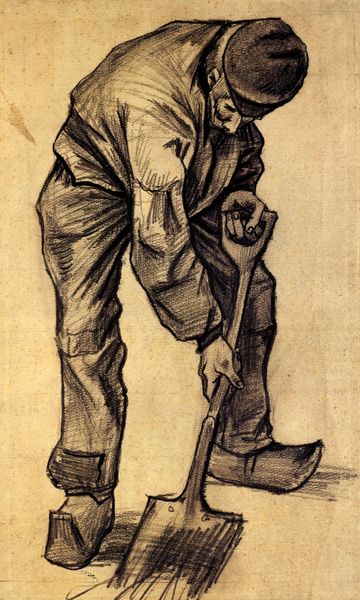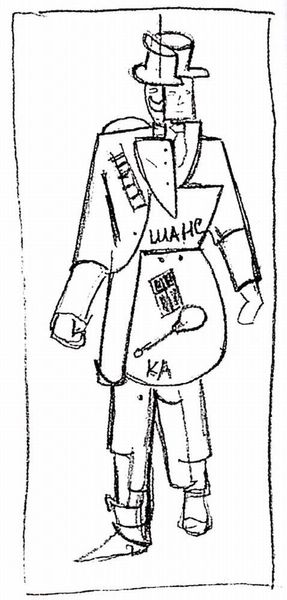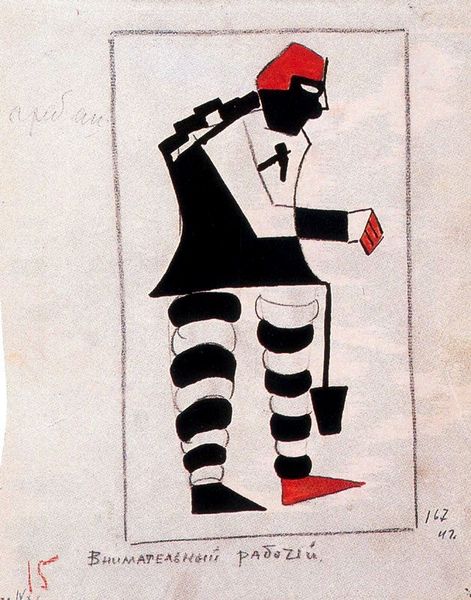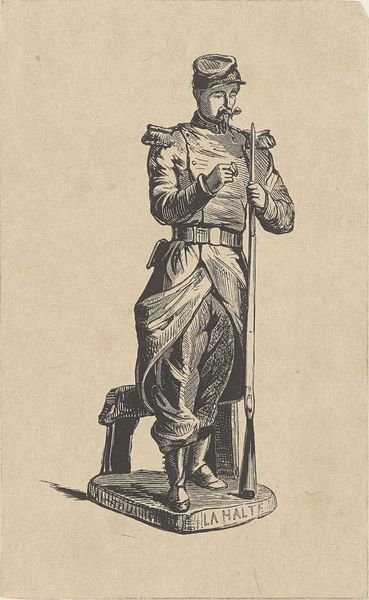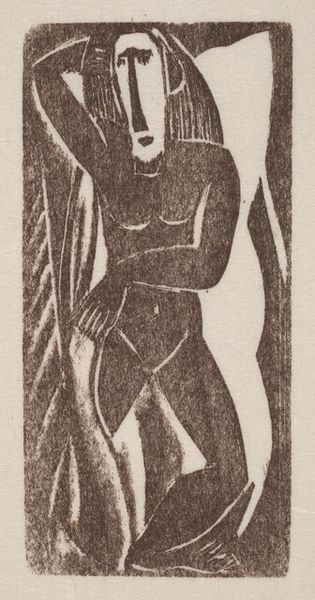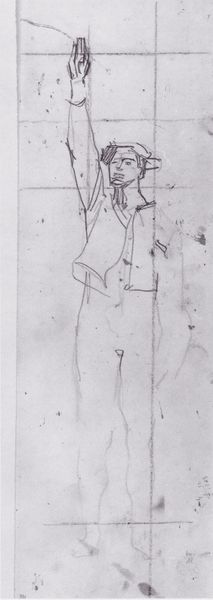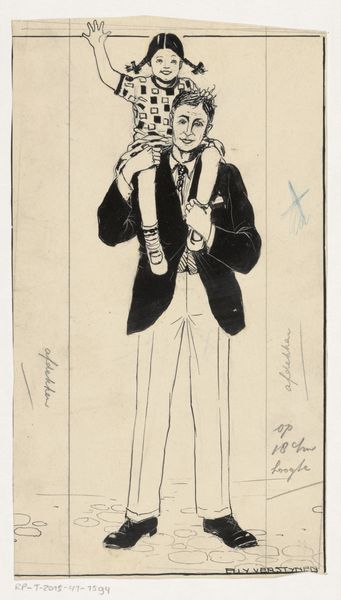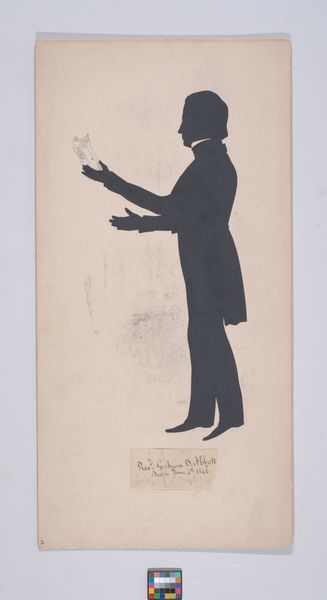
drawing
#
portrait
#
art-deco
#
drawing
#
cubism
#
historical fashion
#
geometric
#
costume
#
fashion sketch
Copyright: Vadym Meller,Fair Use
Editor: This is Vadym Meller’s “Costume Design,” a drawing in the style of Art Deco and Cubism. The figure is composed of very stark black and white geometric shapes. It’s striking, almost severe. What do you see in this piece, from your perspective? Curator: I see a powerful commentary on the constructed nature of identity, particularly through dress. Meller, working in a post-revolutionary Soviet context, engages with ideas of how costume both reflects and shapes social roles. The geometric abstraction disrupts traditional representation, challenging fixed notions of the body and, by extension, fixed social identities. What happens when we see this not just as fashion, but as a dismantling of bourgeois norms through visual language? Editor: I hadn't considered the Soviet context! So, the geometric shapes and stark contrast, beyond being aesthetically modern, were also making a political statement? Curator: Precisely. Think about the avant-garde’s broader project: to create new forms for a new society. Costume, as a marker of class and status, becomes a site for reimagining those categories. Meller, through the language of Cubism and Art Deco, presents a figure that is stylized, almost androgynous, questioning traditional gender roles within a rapidly changing socio-political landscape. The fragmentation of form mirrors the fragmentation of social structures. Editor: That’s a fascinating connection. It makes the piece much more than just a fashion sketch; it's a visual manifesto! Curator: Indeed. It speaks to the transformative potential of art and design to challenge and redefine societal norms. And what might be radical about this approach today? How do we now understand art as transformative for norms around the body? Editor: That gives me a lot to think about, especially in terms of how clothing continues to signal and sometimes subvert identity in the present day. Thanks! Curator: It’s crucial to remember art’s continuous dialogue with society and politics, especially regarding representation and the potential to push against social norms and hierarchies.
Comments
No comments
Be the first to comment and join the conversation on the ultimate creative platform.



